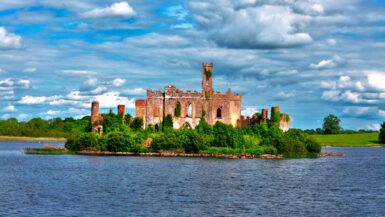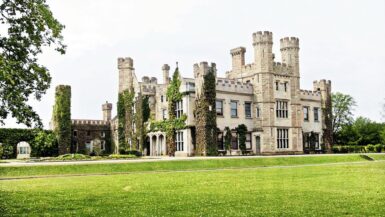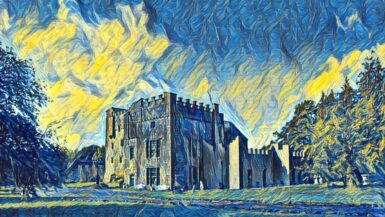Drimnagh Castle is a medieval castle located in Dublin, Ireland. It is one of the oldest and most unique castles in the country, with a rich and fascinating history that spans over 800 years. This article will delve into the history of Drimnagh Castle, from its construction in the 13th century to its current state as a popular tourist attraction.
Construction and Early History
Drimnagh Castle was built in the early 13th century, during the Norman invasion of Ireland. It was constructed by the De Berneval family, who were a wealthy Norman family that had settled in the area. The castle was built as a defensive structure, with thick walls and a moat to protect against attacks from the native Irish.
The castle remained in the possession of the De Berneval family until the mid-14th century when it was sold to the Barnewall family, who were an Anglo-Norman family that had also settled in the area. The Barnewall family made several additions to the castle over the next few centuries, including the addition of a large tower and several outbuildings.
During the Tudor period, the Barnewall family were staunch supporters of the English monarchy and played an important role in the suppression of the Irish rebellion of 1641. As a result of their loyalty to the English Crown, the Barnewall family were granted a number of additional lands and estates, which helped to cement their position as one of the most powerful families in the region.
Decline and Restoration
Despite its rich history, Drimnagh Castle fell into a state of disrepair in the 18th and 19th centuries. The castle was used as a farmyard, and many of its original features were lost or destroyed. In the early 20th century, the castle was purchased by a local businessman, who set about restoring it to its former glory.
The restoration of Drimnagh Castle was a long and difficult process, and it was not until the 1960s that the castle was fully restored. During the restoration, many of the castle’s original features were recovered, including the moat and the tower. Today, Drimnagh Castle is a popular tourist attraction, and visitors can take guided tours of the castle to learn more about its history and architecture.
Architecture
One of the most striking features of Drimnagh Castle is its unique architecture. The castle is a classic example of a medieval fortified structure, with thick stone walls, a moat, and a large tower. The castle also features a number of smaller towers and turrets, which would have been used for defensive purposes.
The interior of the castle is equally impressive, with a large great hall that would have been used for feasts and other social events. The castle also features a number of smaller rooms, including a chapel and several bedrooms.
The castle’s architecture is a testament to the skill of the craftsmen who built it, and it remains one of the most impressive examples of medieval architecture in Ireland.
Folklore and Legends
Like many historic buildings, Drimnagh Castle is steeped in folklore and legends. One of the most popular legends associated with the castle is that of the ghost of a young girl who is said to haunt the castle. According to legend, the girl was a member of the Barnewall family and died tragically in the castle many years ago.
Another popular legend associated with the castle is that of a secret tunnel that runs from the castle to a nearby church. According to legend, the tunnel was used by the Barnewall family to attend mass in secret during times of persecution.
Conclusion
Drimnagh Castle is a unique and fascinating historic site that is well worth a visit. Its rich history, unique
architecture, and folklore make it an intriguing destination for history buffs and casual tourists alike. The castle’s evolution from a defensive fortress to a family home, to a dilapidated farmyard, and then to a restored tourist attraction, is a testament to its enduring legacy.
Today, visitors can explore the castle’s historic rooms, learn about its construction and restoration, and even participate in medieval-themed events and activities. The castle’s popularity as a tourist destination has helped to preserve its history and ensure that it remains a cherished part of Ireland’s cultural heritage.
In conclusion, Drimnagh Castle is a remarkable example of medieval architecture and history in Ireland. From its construction in the 13th century to its restoration in the 20th century, the castle has played an important role in the region’s history and culture. Its unique architecture, legends, and folklore continue to fascinate visitors, making it a must-see destination for anyone interested in Ireland’s rich history and heritage.





Leave a reply